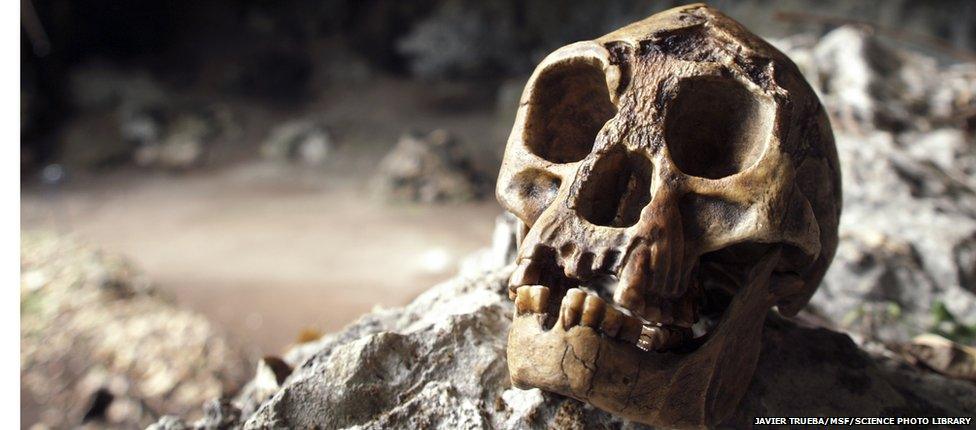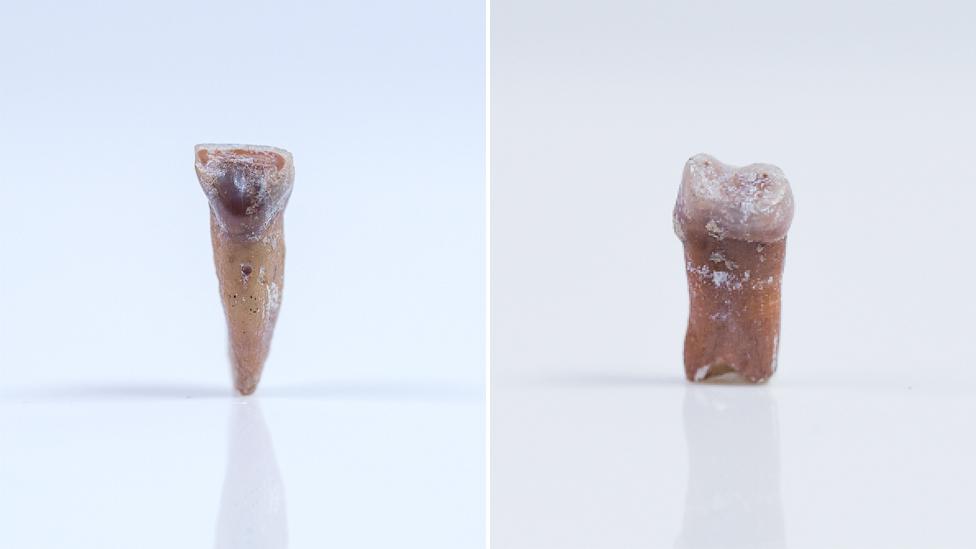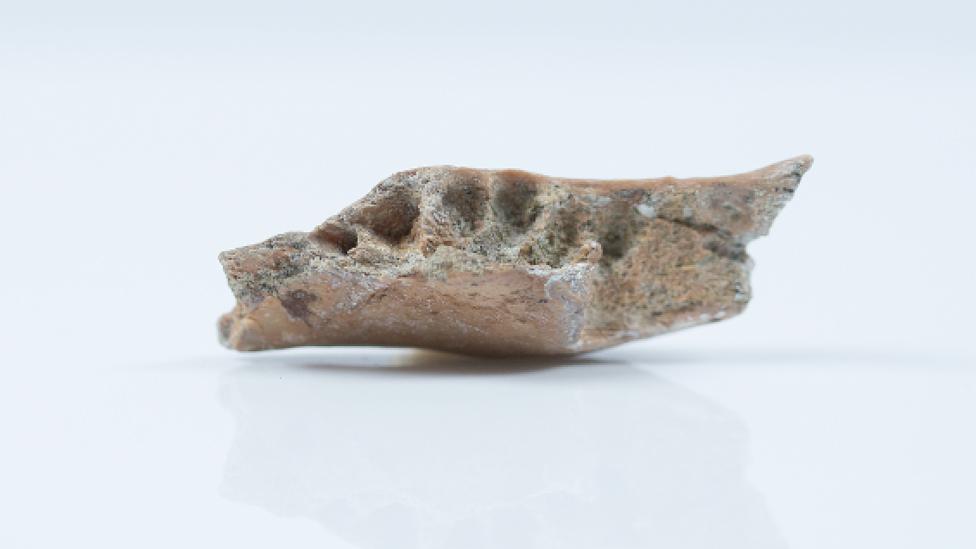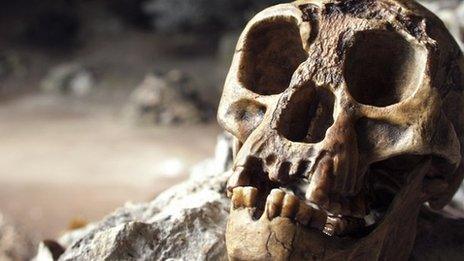Hobbit find shows tiny humans shrank 'rapidly'
- Published

The story of humanity was rewritten 12 years ago by the discovery of the Hobbit. Now scientists unearth another twist to this epic tale.
Scientists have discovered the 700,000-year-old ancestor of the tiny primitive human known as "the Hobbit".
Its fossils indicate that the normal-sized primitive humans who first set foot on the Indonesian island of Flores shrank "rapidly" to become Hobbit-sized.
The remains are of at least one adult and two children, who are all just as small as their descendents.
A paper in the journal Nature, external details the latest findings.
The Hobbit's discovery in a cave on Flores created a sensation 12 years ago. Just a metre in height (hence the affectionate nickname), it was initially thought they could have been living as recently as 12,000 years ago.
Subsequent analysis has shown they actually existed slightly further back in time, between 50,000 and 60,000 years ago - not that this lessened the fascination with the diminutive species more properly called Homo floresiensis.
And now comes new research from some of the scientists involved in the original discovery that reveals insights on the Hobbit's lineage.
The team presents much older fossils, dating back 700,000 years, unearthed at a site named Mata Menge.

These remains consist of a piece of lower jawbone and several teeth. They are remarkably similar to those of the Hobbit find in 2004 and are thought to belong to the ancestors of floresiensis.
There are also stone tools at the same site which are much older still, suggesting ancient human-like creatures lived on Flores a million years ago. One theory is that these people were another normal-sized species we now refer to as Homo erectus, which was known to live on the island of Java, about 500 km west of Flores.
According to Dr Yousuke Kaifu, from Tokyo's National Museum of Nature and Science, the discovery of the tiny 700,000 year old hobbit ancestor, external suggests that erectus might have shrunk within the space of just 300,000 years, which is a remarkably short period in evolutionary terms.
"What is truly unexpected is that the size of the finds indicates that Homo floresiensis had already obtained its small size by at least 700,000 years ago."

Dr Gert van den Bergh, from the University of Wollongong's Centre for Archaeological Science, who led the team, said the entire team was surprised at the small size of the adult jawbone.
"We were expecting to find something larger than what we found, something closer to the size of the original founder population, Homo erectus, but it turns out that they were as small if not smaller than Homo floresiensis.
"The rapid evolution seems quite fast but we have no examples of human or primates (shrinking) on other islands to compare it to."
The theory is that erectus shrank to cope with the Island's relatively meagre resources. But the big question is how did it get there. Homo erectus was too primitive to build boats and it was too far for the species to swim from Java to Flores. One possibility, is that individuals were swept across by a giant tidal wave, according to the researchers.

The 700,000-year-old remains were discovered at the same site as stone tools that are one million years old
But Prof Chris Stringer of the Natural History Museum in London believes that the evidence for the rapid shrinking theory is circumstantial: "We do not know how large the tool-makers at one million years actually were, since we do not have their fossils yet; and, secondly, we cannot be sure that the evidence at one million years actually represents the first arrival of humans on Flores."
He added: "It is just as likely that the ancestors of (The Hobbit) came from somewhere like Sulawesi, to the North, and we have no evidence so far of who might have been there more than a million years ago."
The researchers acknowledge that their argument is based on scant data: one fragment of a jawbone and a handful of teeth. But Dr Adam Brum of Griffiths University in Australia says the team hopes to gather more fossils to build up a more complete picture.
"We want to know what the very, very first (humans) that set foot on the island were like. That involves finding the fossils that date back to before a million years ago and which go with the stone tools."
Dr van den Bergh added that the discovery of Hobbit-like humans living on Flores 700,000 years ago ruled out the possibility that the discovery in 2004 was of a group of modern humans who had been stunted by illness.
"This find quashes once and for all any doubters that believe Homo floresiensis was merely a sick modern human."
Follow Pallab on Twitter, external
- Published21 October 2014

- Published17 April 2013
